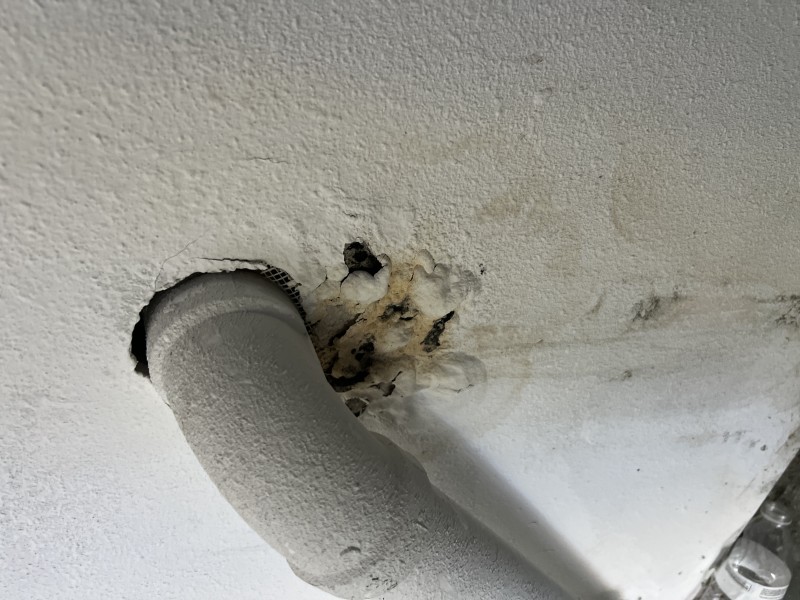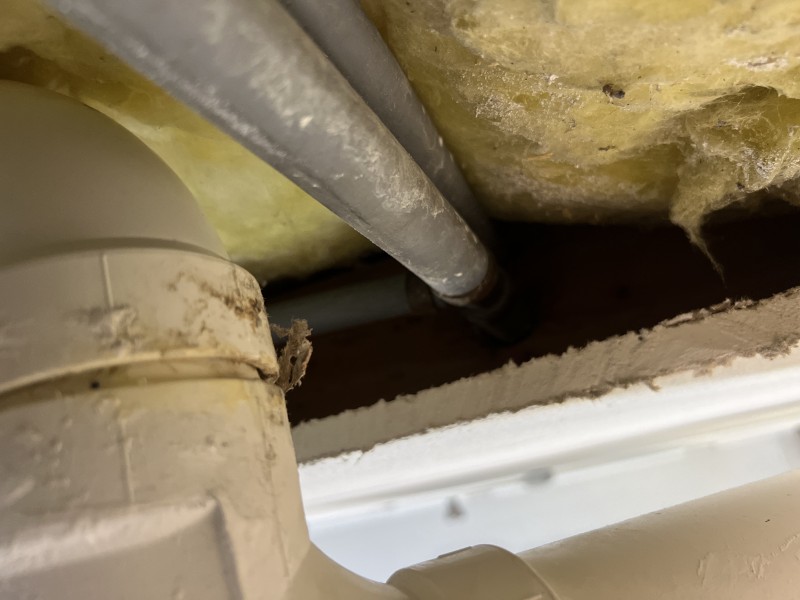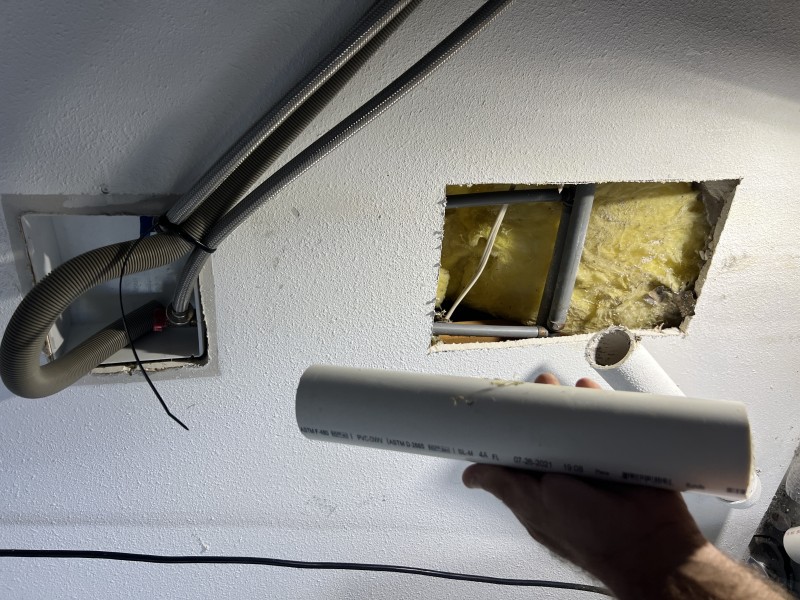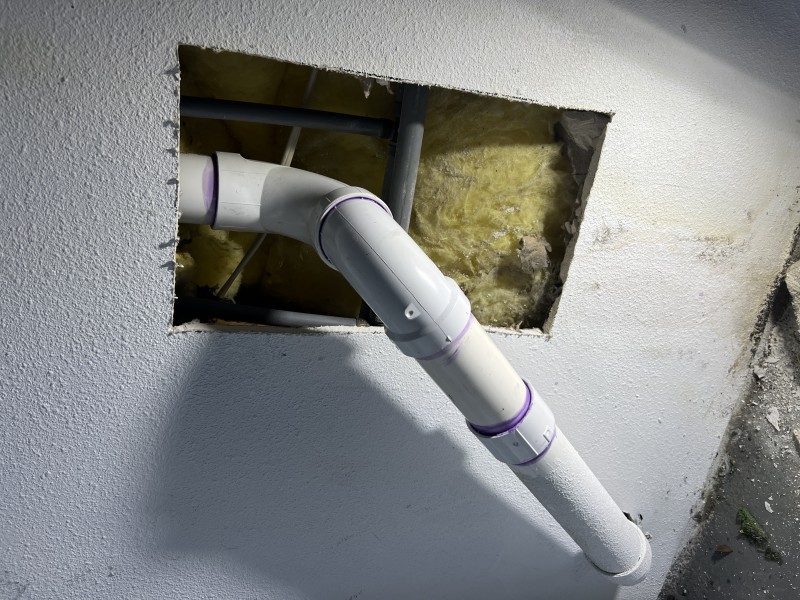Washing Machine Drain Leak Repair – Deltona, FL (October 2025)
Called out to a residential laundry room in Deltona, FL, we investigated recurring water intrusion during the washer's drain cycle. Using leak detection best practices, we traced the problem to the laundry drain assembly behind the wall, where water was escaping and showing up in the adjacent garage.
After opening the wall, we confirmed the root cause: the PVC standpipe was not glued into the washer box hub. This improper connection allowed wastewater to seep during high-flow discharge. We rebuilt the affected section with Schedule 40 PVC, applied PVC primer and solvent cement, and restored a durable, code-compliant connection.
Tools on this project included a PVC pipe cutter, reciprocating saw, deburring tool, and inspection light. Following solvent-weld cure time, we performed multiple drain tests to verify a watertight seal and proper drainage performance. This prevents future moisture, odor, and potential mold in the wall cavity.
Note: The drywall remained open for drying and inspection; drywall patching is handled by others. Our scope covered diagnosis, plumbing repair, and leak elimination.

Accessing the Drain Assembly
I carefully cut the drywall to expose the PVC drain, standpipe, and washer box. Opening the wall lets me inspect every joint for capillary leaks, improper priming, or missing PVC cement—a critical step in accurate leak detection and moisture control.
- Tools: utility knife, reciprocating saw, inspection light
- Focus: standpipe alignment, trap integrity, vent proximity

Finding the Unglued Joint
Here the issue is clear: the standpipe wasn’t glued into the washer box hub. During the drain cycle, vibration and flow allowed water to escape into the wall cavity. Proper solvent welding with PVC primer and cement prevents this failure.
- Issue: unbonded hub connection
- Risk: hidden moisture, mold, drywall damage

Rebuilding with Schedule 40 PVC
I removed the compromised fittings, checked pitch and alignment, then applied PVC primer and PVC cement to bond the standpipe into the washer box. New Schedule 40 fittings deliver a durable, leak-free connection for high-flow laundry discharge.
- Steps: cut, deburr, dry-fit, prime, cement, cure
- Verification: flow test & visual inspection

Final Testing & Results
After cure time, I ran multiple drain cycles to confirm a watertight seal with no seepage. The laundry drain line now performs as designed, protecting the garage from water damage and keeping the system aligned with Florida residential standards.
- Outcome: leak eliminated, proper drainage restored
- Note: drywall patching to be handled separately